One of the most common questions in all of nature photography has to be, “What lens should I get next?”
That question makes a daily appearance in my e-mail, the comments section of my YouTube videos, and across every photography forum known to man.
Typically when the question of getting a new lens is posed, it’s met by a host of internet pundits who are more than happy to weigh in with their opinions. However, in many cases, these views are little more than thinly veiled justifications for their own gear purchases – or only a guess that seems reasonable with little or no background qualification from the poster. So, you do need to be careful.
The funny thing is, I’ve never, ever had a problem deciding what lens was next on my “must have” list, so I thought I’d share my thoughts on the subject.
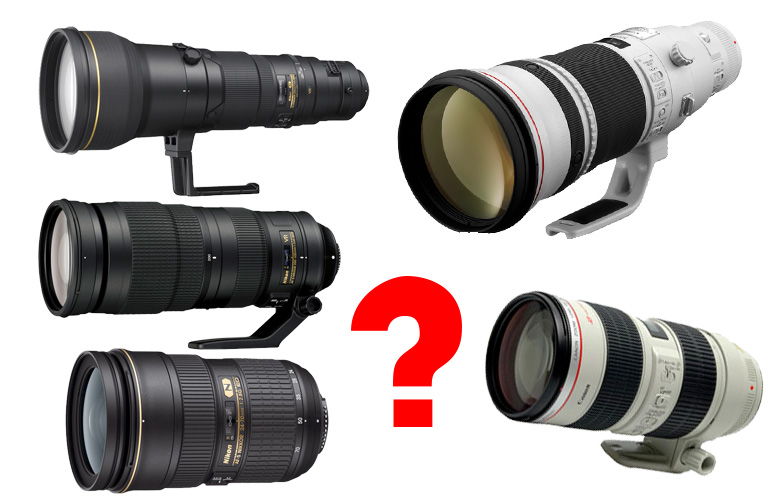
To me, the reason to buy new glass is always a pragmatic one. If I’m plopping down the cash for a new optic, it’s not because I have an excess of Ben Franklin’s sticking out of my mattress that need a new home. No, it’s because there are shots I’m missing by not having that particular lens hanging off the front of my camera.
So, when Gear Acquisition Syndrome (GAS) hits, the first thing you need to do is decide what shots you’re missing – and the second thing you need to do is decide if it’s really the gear that’s standing in your way.
In some cases, this is easy. If my longest lens is 200mm and I’m constantly getting mauled by bears because I’m too close, it’s painfully obvious that I need something longer.
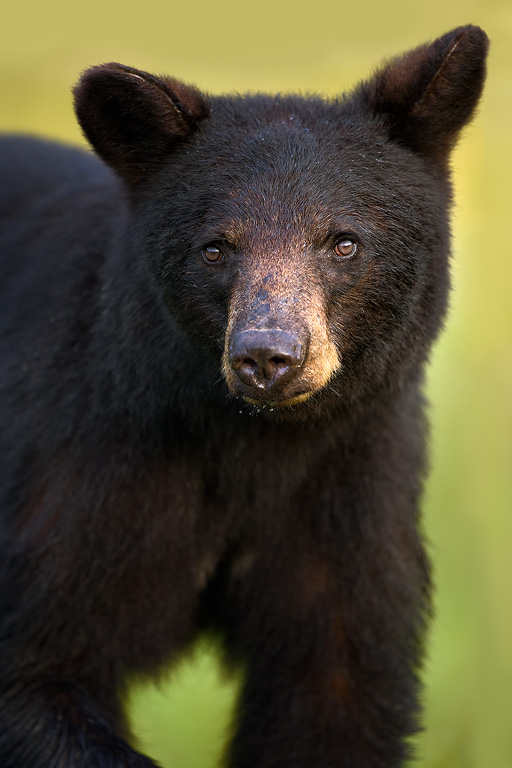
By the same token, if I’m always finding myself hitting the short end of my 24-70 when there’s a landscape in my viewfinder, then maybe it’s time to look at something wider.
You can also look at speed and sharpness. Maybe you have your focal lengths covered, but you want images with better acuity, sharpness, and color than what you’re getting with the kit lens that came with the camera. Maybe you need a faster F/stop because you shoot in low light or yearn to capture photos filled with beautiful soft backgrounds. Perhaps you need faster AF to keep up with some fleet-feathered little bird.
The trick is, you need to discover where the biggest hole in your lineup is and plug it. That’s how you know what lens to buy next. Ask yourself, “What types of photos do I want to capture that just aren’t possible (or easy) with my current glass – and what lens would I need to get those kinds of images?”
In asking the question, you may even realize that it isn’t an issue with gear, but rather a problem four inches behind the viewfinder. You may have the glass required, but need to develop better field techniques to really capture the image. The good news is that problem is usually cheaper to solve!
What if you can’t readily identify that hole? Well, there are a couple of possibilities. The first is that maybe you really don’t need anything at the moment and you’re simply having a GAS attack due to a little extra cash in your pocket. Hey, it happens to the best of us. I know that sometimes I get “bored” and when that happens, I tend to daydream about new gear. However, the truth is spending your money on a trip that allows you to use the equipment you do have or on educational materials to increase your proficiency as a photographer is probably a better decision.
Another possibility is that you simply need to get out and shoot more of what you love. Every single time I discover a hole in my lineup, it’s because I keep coming up short on a particular shot that a different lens would have helped me secure. Again, it’s not just the focal length that comes into play. Maybe you want a sharper optic, one that focuses faster, or a lens that provides depth of field shallower than an Instagram celebrity.
However, you won’t know unless you get out and shoot. Once you do, trust me, you’ll notice when the glass is getting in the way of the image you want.
My Philosophy
Now, all of that said, I’m going to pass along my personal philosophy as a nature photographer. The following is just my opinion and how I do things. Not everyone operates the same way, so what works for me may not work for you, but I thought it might be a good place to start.
For me, it’s important that I cover the widest range possible with my glass. I am currently covered from 14mm all the way to 600mm (840mm with a TC) and I have only a few gaps in there.
From the ultra-wide end to about 200mm, I HIGHLY recommend starting with zooms and then adding primes down the road if you need them.
The reason for this is simple. I seldom do wildlife in that range and from 14mm to 200mm I’m all about landscapes. (Again, keep in mind this advice is coming from a nature photographer. 🙂 What you need may vary.)
Now, let’s remember that you control perspective by your camera position, nothing else. A lens is simply a tool for cropping – it does not control perspective – despite myths to the contrary floating around throughout the wilds of the internet. (I’m planning a new video about this down the road, but for now, you’ll have to take my word for it – or verify with Google or Ansel Adams if you like).
So, with that in mind, the way I set up my landscape shots is FIRST to find the perfect perspective for the scene. Now, with my camera position discovered, I choose a lens that will give me the crop I want. With a set of zooms, this is easy. I just twist that zoom ring until I see the crop I want in my viewfinder.
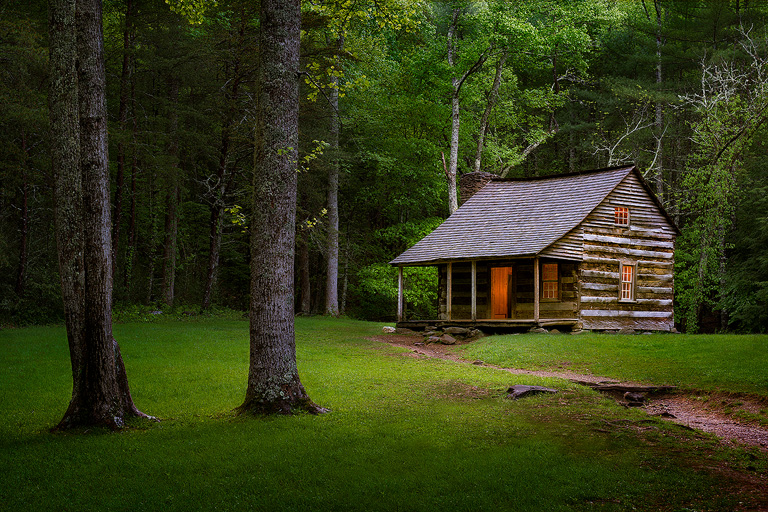
With primes, it’s a problem.
With primes, in all likelihood, you’ll have to zoom with your feet. Worse, if you only have a few primes, you may have to move quite a bit. What happens when you move? That’s right, you change your perspective and are no longer in your ideal location. When you shoot with primes, they determine the perspective instead of you.
Of course, sometimes the prime is the right focal length and it works out perfectly – plus you generally have better rendering and sharpness from the prime. However, in my years as a landscape photographer, I’ve used primes on and off and eventually came to realize that my photos were much better when I had complete control of perspective – and zoom lenses allow for that (and are what I currently use for landscapes).
Zooms may not be quite up to primes optically, but I would argue perfect perspective is more important than raw optical performance in the vast majority of situations. And again, this is just how I work, your mileage may vary (but the physics of perspective I mentioned above will not).
Now above 200mm I’m most likely shooting wildlife, and perspective – while still important – isn’t quite as crucial. With wildlife, not every little object in the frame plays a critical role as it often does with my landscape images. In fact, with wildlife, most of the background and even foreground tend to be a soft blur, so I find critical control of perspective isn’t as important as it is with landscapes. In those situations, I opt for the fast AF speed, sharpness, and rendering primes bring to the table.
That said, the rules aren’t always hard and fast.
I also keep a 200-500mm handy for those times when I do need to stay in one position (at one perspective) and crop with the zoom. In fact, the 200-500mm is the lens I like to have mounted to a camera on the passenger seat of the car as I drive through target-rich wildlife areas. I also tend to use the zoom when I’m in a situation where there are rapid changes of distance with an animal. Once upon a one time, I would try to use a prime for these purposes, but I was always too far away or too close – never the crop I wanted.
So, again, a tool for the job but selected based on missed opportunities when previously trying to use a different optic.
Of course, the decision can become more difficult when you’re debating between two similar optics. An example that seems to land in my inbox all the time is the choice between a zoom like the 200-500mm or a prime like the 300mm F4 (more info for that exact scenario here). Or, for those with deeper pockets (or higher credit card limits), the debate between something like a 400mm F2.8 or a 600mm F4.
How do you make the decision when faced with a couple of options that seem equally good? Same as I’ve been saying all along – pick the optic that you feel will fill the holes in your lineup best.
When it comes to choosing between two similar optics and focal lengths, there is often a deciding factor / compromise you’ll have to make. For example, maybe you’re debating between a zoom like the 200-500mm and a 300mm F4 with a teleconverter as needed. The differences are obvious – do you trade a stop of light and flexibility of a zoom for a fixed lens that’s a stop faster and faster focusing? And, is it worth the price to do so?
What about the 400mm 2.8 vs. 600mm F4 example? Do you trade some focal length for the faster (and slightly sharper) optic? It’s a tough call.
Oh, and the same goes for shorter lenses – should you get something like a 14-24mm (or 11-24mm for Canon shooters) or a 16-35mm? You really have to think about the holes and how your going to use the lens. For me, the 14-24mm is the better choice – I wanted F/2.8 for starry skies, I wanted to go as wide as I could, and I wanted the sharper lens of the two. However, the 16-35mm makes more sense if you want to easily use filters and need something beyond just 24mm on the long end.
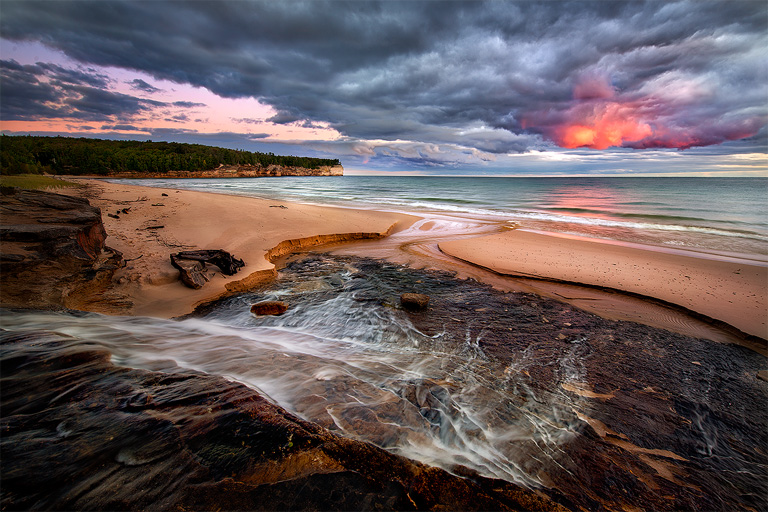
The trick is, only YOU can really decide. I can’t do it for you and neither can a bunch of random strangers on the internet. I know this seems like pretty harsh talk coming from a guy who occasionally falls over putting on his underwear, but YOU have to ultimately take responsibility for making the decision and it can take a bit of thought.
Here’s the thing – when faced with the choice between two optics, most people don’t want to make the “wrong” decision, but that line of thinking is flawed. In reality, you’re not really trying to decide between a “good” and “bad” lens; you’re trying to decide between two good choices. You need to make your decision based on the advantages that you think will be more valuable to you, even if those differences are slight. (Note – if you’re stuck and struggling between a couple different lenses, check out all the reviews you can – often you’ll find a deal maker or deal breaker for one of the lenses.)
The brutal truth is that no matter what decision you make, there will be times you’ll wish you have the other optic, it’s just the nature of the beast. All you can do is choose a lens that seems like it will be the right tool for the job in the majority of the cases based on what you know at the time of purchase.
Finally, you may have noticed an underlying theme going on here: to figure out what lens you should get next, you need to shoot. You can’t armchair quarterback this one. Every lens in my bag is there because the optics I had before getting the new lens just weren’t doing the job – or doing the job as well as another optic would. If you’re really in doubt, renting a lens for a few days might help you sort things out.
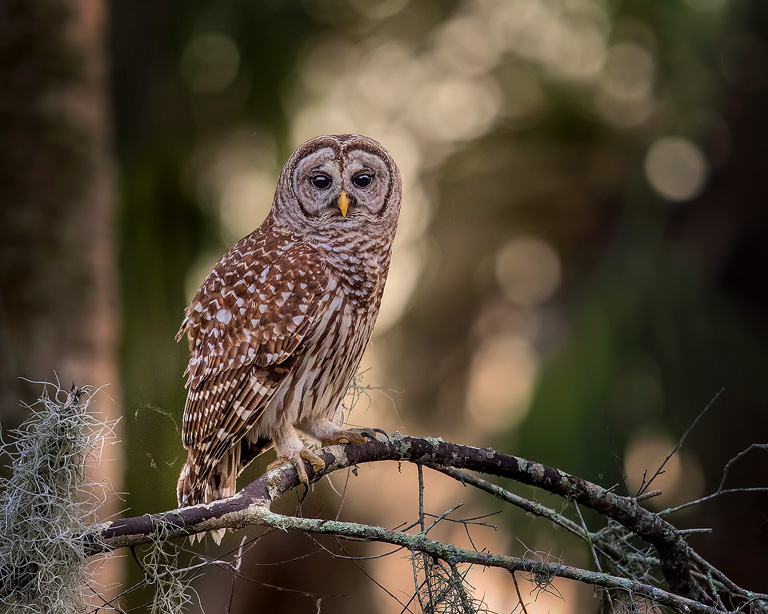
For example, back when I primarily shot large game, the 500 F4 was the lens most likely to be hanging off the front of my camera. However, as I started photographing birds more frequently, I discovered that the 500mm always seemed to be coming up a little short – so it (and a painful chunk of change) was traded for a 600mm F4. There are still plenty of times I would like to have a 500mm F4 (that extra 100mm exacts a significant toll in size and weight), but the MAJORITY of the time, the 600mm F4 is the right choice for me – and that’s what counts.
So, while it’s never easy to pick a new lens, I think with some careful consideration of what you shoot and where the holes in your lineup are, the decision can be a little less traumatizing.
PS…
If you enjoyed this article, I think you’ll REALLY like my e-books, Secrets To Stunning Wildlife Photography and Secrets To The Nikon Autofocus System. They’re filled with hundreds of pages of information just like this. Check it out – click here (hey, it’s free to look 🙂 )


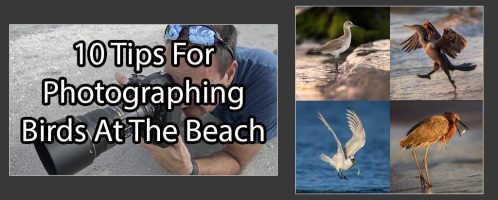
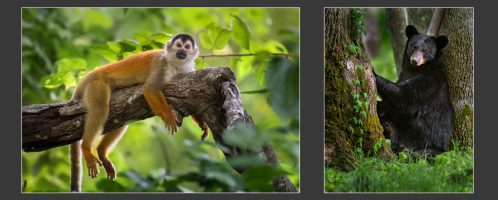
I think you made some great points in this article Steve. I shoot both wildlife and landscape photography mainly a wildlife photographer. I don’t do photography for a living but it’s my passion these days being retired. I bring up a point about making a decision between a 400 f2.8 prime or the 600 f4 prime. As a wildlife photographers we all face low light situations more often than not. Early morning, late in the day or in a thick forest in the middle of the day. I live in Northeastern Wisconsin we have on average 245 days a year… Read more »
This is great info, Steve. This is the situation I find myself in today. I want all the gear! LOL
As you know from my recent email to you, 200-500 zoom or 500mm PF? One part of me is a big zoom fan and I tend to think it would serve my perspective issue more frequently. But the idea of the faster, lighter, sharper 500 is so tempting.
I guess I can’t really go wrong either way.
Steve, I used to have the previous 300 f4 which seemed to lauded by many but my copy was just not sharp despite a fruitless trip back to a Repairer. I therefore was looking forward to the new one though I knew it would be steeply priced (especially in UK where for example we pay another £1000 more for D850 body than USA?). However the stepped nature of the lens technology and the reports/rumours of poor flare performance have put me off. Any thoughts on your use of the newish 300mm F4 VR? Also I must recommend your Wildlife Secrets… Read more »
One addition to my previous post in order to be accurate and explain my selections: With 600/4 I use FX (=D750), but with 300/4 PF a crop body (D7200).
Hi Steve, I am a bit late bird on this page, but now reading and learning with pleasure your articles. I have both 300/4 PF and 600/4 photographing mainly birds, sometimes also larger mammals from hides (e.g. brown bears, wolverines) and my experience is that between these two stellar optics I primarily make a choice based on the weight. If I am not driving close to my destination (but, instead, biking or am by foot) my choce is (100%) 300/4 PF and 1,4x TC in my pocket. I have a small trolley in my considerations to move 600/4, if there… Read more »
Great perspective and like your video’s and books, logical and simplified. For the past 6 yrs I have shot 90% of my wildlife, mostly animals, here in Africa with a 300 f2.8vr2 + TC1.4 or 2.0 on a FX body. as we shoot mostly from the vehicles and difficult to change position, I have been dependant on a fair amount of cropping and had to work hard on wider compositions. I bought the 200-500 as a second lens for flexibility but after one trip into the dry and dusty Central Kalahari in Botswana the zoom was stuck and a lot… Read more »
G’day Steve,
Decision made. Now, will you comment on the tripod collar and foot that comes with the 80-400mm Nikon lens? In your experience, is it sufficient to just add a longer base plate or do you use a replacement collar with two attachment points for better stability? Thanks.
Cheers, Diane
i love all the way u do it am freaky out u are the one
I fully agree with zoom advantages with landscape photography. I am using 16-35 mm all the time. But with the bird photography, which I love, I prefer primes. Anyway, they all come to short and I have to crop and use teleconverters and not to zoom down. A second consideration is a weight. I use 300 mm 2,8 vrii and even more 500 fl f4 which are the same weight ( both with teleconverters 1,4 or 1,7 work excellent) and I can shoot handheld if needed. But 600 or 800 lenses are a way to heavy. Probably good for sitting… Read more »
Great article, did what you said before I read your article. I wanted to get nikon 200-500 but did I need it NO! I got a 70-200 f/2.8 that what I needed after going to see my grandsons my current lens didn’t do the job for low light and didn’t want to blind them with flash. Also your book Nikon Auto focus really help a lot for me understanding better.
Great stuff as usual Steve. Along the same lines but different is whether to get a crop body like the D500 or full frame like the D810. I have the D500 and it’s great for shooting wildlife and I’m happy with it. For me I’m finding that my landscape shots aren’t quite there so I’m wrestling with getting a D810.
I have a D610 which is a full frame and love it. Price wise its a little less than the D810, might be another option. Not sure what the D810 has vs the 610 but worth checking into.
Hey Bill, I am struggling with the same thing. I have the D500, and I love it. Have really got some great wildlife shots out of it, and some decent waterfall and landscape shots. But, even though it has great low light perf, it is just hard to beat full frame for that “extra” notch of performance. Plus, Nikon does not have a “great” array of DX lenses. Most sharp, fast glass is FF. I agree with Kristen, and have thought about the D610 as well, to step up to FF. However, due to this being Nikon’s 100th anniversary, there… Read more »
I have a D500 as well and a D750 which is my primary camera for landscapes. I found the 24-85 often just a little to ‘long’ in focal length, tried the 14-24 and loved the quality, but I don’t often need something that wide and it’s expensive! My solution was the Irix 15mm. It’s manual but for landscape work on a tripod that hardly matters, it’s fast enough at f/2.4 for stars and low light city scares, and it’s about a third of the price of the 14-24, takes (95mm) filters and weighs less than half.
The D810 is an incredible landscape camera and my first choice for that wort of work – with the D750 being a close second (that tilt screen is a huge advantage / convenience at times). Either camera would get you to FX and do a fantastic job. I wouldn’t hesitate to print a 24×36 from either body.
Great Article, Steve. Keep them Coming 🙂
Steve, Good article, I agonize over what lenses to get and this is helpful. I have rented a couple of lenses to try out during specific events, and it was a great way to go. I also decided through practice, that for my everyday shooting, gun slinging style from the car or a quick opportunity, the versatility and reach of the Tamron 150-600 G2 is the right choice to keep on my camera in the car. But the images tend to be soft or I have to crank up ISO to compensate for the 6.3 aperture. I’d love to get… Read more »
Keep in mind that the 500mm was often a little short for what I was shooting – and not all the time. I like to have the subject taking up at least 1/3rd of the frame, preferably 1/2 if I can. The 500mm just wasn’t quite doing it unless it was married to a TC. The 600mm on the other hand can be used without the TC a lot more frequently. Keep in mind though that I like to shoot full frame – on a crop camera I often find the 600mm is too long – so it really comes… Read more »
Steve, this is great as usual. Can you please somewhere down the road, do a vid on adding light during enhancements in what ever program you use. Your lighting is above and beyound. Can you explain how you come to your conclusions. And how you go about drawing the eye to catch the viewer’s attention. Thanks a lot, you are the MAN——– Rudy
Adi, don’t forget to fine tune your focus. I’ve finally spent the time for my D750 + G2 combo (thanks to Steve’s AF book finally driving me to do it right) and what a difference it has made! I’m at +11 and I’m delighted at the improvement.
Do not have a web site yet but I want to be the best that ever was, I am disabled and it is very hard to get ahead I have a d 5200 and a d 90 and a d 7000 some lense my 55 300 took a dump, I have a 55. ?200 and a,55 mm and a18 55 not that great but sufficient ,oh a18 270 good lens, I am very greatly interested in taking pictures I was since the 7 the grade now that I am disabled it seems that’s all I can handle that really interests… Read more »
I forgot to say if there are any schools or help for the disabled you might. Know of I know the uk has awesome programs why is it the USA has nothing the richest country in the world does not offer anything unless you come from a foreign land then you get everything it’s sad when you can’t take. Care of your own, why can’t we do something about it I would Lead the cause,it’s a crime when we can’t take care of our own. norm Greenwald 918-360-2524 call me with your thoughts thanks.
Steve, Great article and advice and totally agree with all you said. I had a similar situation when deciding if I should get a longer lens then my Nikon 80-200mm for photographing the occasional wildlife shot. The 80-200mm worked alright some of the time but not all the time for getting that bird or deer shot. I shoot mainly landscape so didn’t want to spend a lot of money on a 200-500mm or 600mm lens and not use it that frequently. I found the new Nikon 80-400mm fit the bill for me for getting that extra reach when needed. With… Read more »
You may know this already, but by default the D810 has AF Illumination turned on (custom setting A6). If you turn it off, instead of the default outline you get in DX mode, you’ll get a nice mask. IMO much easier to use that way.
This guy is good. All the articles that he put’s out are very easy to understand. Very well done. He spell’s it out to a tee !
I like the article and would add one more set of considerations. That is — When do you get to shoot? There are times when I go off to the local wildlife refuge on my own, or walk around my wife’s flower gardens and I get to choose the shooting circumstances. At least as often, I am with my wife, kids, grandkids in some combination and we are walking around a city, a park, the zoo, the woods. My photo objectives change and so do my lens choices. So, I bought the 200-500 f/5.6 Nikkor for when I am in… Read more »
Good article, and an issue that every serious enthusiast confronts. After using the Canon 500D close-up filter for my “macro” shots, I realized (after a day’s shooting of drop-dead gorgeous orchids in San Francisco’s Conservatory of Flowers) I needed a real 1:1 macro lens to get the images I wanted. Not being able to afford Nikon’s duly famous 105mm macro, I opted for Tokina’s 100mm for a third of the cost of the Nikon, and am extremely happy with it. For most of us, it comes down to affordability; otherwise we’d have 14mm–1000mm covered. I reckon my next lens will… Read more »
I have both your Secrets To Stunning Wildlife Photography and Secrets To The Nikon Autofocus SystemSecrets To Stunning Wildlife Photography and Secrets To The Nikon Autofocus System. I also have an 11-16 on the short end and an 80–400 on the long end. This past winter, while in the Everglades shooting birds with a 1.4 teleconverter on the 80-400, I more often found a need to quickly remove the teleconverter because I needed more width than I needed even more reach. Yes, there were times that a 600 or 800 would have been nice, but I personally can not carry… Read more »
Another great article, as always. Thanks!
Suggestion for next article: once you decide what to get, and UPS delivers it, how do you test it and satisfy yourself you got a “good one”? Assume you don’t have an Imatest or whatever in the garage. Lens reviews, e.g. Mansurov’s, often say the first sample they got wasn’t great, but they got 2 more which were better. Order lenses by the threes?
Thanks.
In comparing the 200-500mm and the 300mm F4 PF with the TC14 a point that is worth mentioning is the weight difference. I have both and for weight as in light and portability the 300mm wins hands down over the 200-500 but it lacks the ability to go down to 200mm, which of course on a D500 is 300mm equivalent. My wife has a D500 and the 300mm F4 and can walk around all day with it. She certainly could not with the D500 and 200-500mm. Excellent points as always Steve.
Before Nikon came out with the 200-500mm I purchased the Sigma 150-600mm Sports version. When Nikon came out with the 200-500mm I was unsure I made the right choice (though I like the Sigma lens) and the only time I can use it is on a tripod or mono-pod as it is heavy. The Sigma 150-600mm Sport does have great IQ even at 600mm, however the bokeh is not the same as my Nikon 300mm f2.8 or the 200-400mm f4.
Great article Steve, I have to admin I get GAS here and there and thinking about what my really need is, most of the times, helps me not to buy useless stuff. On the other end every time I am in shed with some rich doctor, shooting birds, and I see a 300mm f2.8 with a 1.4 / 1.7 / 2x teleconverter I look at my 200-500 and I feel really sorry for myself. Even when my zoom helps me getting some shots that the other guy has missed, when I go back home and I look at my pictures… Read more »
Fabrizio, you have articulated my thoughts exactly (we even have the same lens!). I dream of the images I could get with a Nikkor 500mm f/4 FL but it is hard to justify spending multi thousands of dollars on a ‘better’ 500mm lens when it is, after all, still just a hobby.
Don’t feel too bad about that 200-500. I have quite a bit of expensive glass and I use the 200-500 all the time. The difference in sharpness between it and the big primes, while noticeable, is still negligible. in fact, I promise you the 200-500 is sharper in the hands of someone who knows how to support / use it properly than a 400 2.8 is in the hands of someone who doesn’t.
Great article with a lot of sound advice, Steve! Common sense but when GAS takes over, it pushes common sense to the background so it’s always good to have the reminder. I would love to have a larger lens (as would everyone!) but at this point the 300mm PF Nikon lens with the 1.4 teleconverter are my longest lenses. I still find myself wanting extra distance but when mounted on my D500 it will have to do. As you mentioned, the images that are boring, dull or out of focus are not the result of the lens but rather the… Read more »
Excellent article Steve. Great practical advice, I’ll be sending this one to friends. Thanks…as always.
Excellent article and very fitting for me right now. I currently have a Tamron 150-600 G1 lens. It is a good lens but I would like my pictures clearer so have been considering either upgrading to the G2 version of that same lens or switching to the Nikkor 200-500. It’s such a difficult decision as they both have pros and cons and it’s like I want a combo of both lenses 🙂 Anyway, thanks for the article. I think it will help me work through this very difficult decision.
Hi. I’ve often heard is look at the focal lengths your shooting at if you want to upgrade to better glass. My walk around lens is the nikkor 18-200 e
3.5 to 5.6. Most are my shots are in the18- 35 range so I’m looking at a sigma 17-70 f2 to f4.
Re: zoom for landscapes. For me I tried the 16-35mm f/4 for FX Nikon, but I was having trouble w/ focusing in dark situations – it got to the point where I was just missing shots to the point where I stopped using it and started adding some key f/1.8 primes. [20, 24, 35 and 50mm – I’m still on the search for an ultra-wide prime lens…] The extra couple of stops of light helped me get much better focus results. The perspective issue has never cropped up for me, but perhaps I just haven’t reached that level of awareness…
It’s easier to control your perspective with you have the complete set of lenses (as you do) with very little gaps. Where it becomes an issue is when you have something like a 24mm and the next lens up is 35mm or 50mm. I think my next video will be on perspective, so it’ll explain what I mean in more detail.
Good stuff Steve. I’m surprised you only tangentially discussed cost, that most limiting of all GAS factors. I have a super-tele-zoom (was an original Tamron, now the G2) because I can’t afford (nor particularly care to carry) one of the exotic primes. Even your comparison of the 300 PF versus 200-500 didn’t discuss that the 300 PF is $2k + $400 for the 1.4x, versus $1400 for the 200-500. Seems the most common discussions I see are between the now large number of reasonably similar super-tele-zooms. With 5 to choose from how do you pick from THAT mess? Anyway, I… Read more »
Barry, seems to me you should check out the new Tamron 10-24. Yes, it’s slow, but you’re doing landscapes so to do it right you’ll be on a tripod anyway.
LOL – Yup, I’ve been next to this people as well – but with exotic primes!
This is pretty freaky. I am currently twisting myself inside out trying to decide on a “landscapes” lens for my D500. I have the 200-500 so that end is covered, at least for me. Thanks Steve, for helping me get back to the basics of why I need/want a new lens. Oh, btw: if you have any recommendations for me, please let me know. ok, I just broke all the rules on this one…..
Barry
Barry: I’ve heard really good things about the Tokina 11-20mm lens – in my search for a wide angle solution for that a couple of professionals I follow have spoken very highly about it. The 82mm filter thread is a bit of bother for me though… ;-( Regards, Alan
Oops, posted this in reply to myself above!
Barry, seems to me you should check out the new Tamron 10-24. Yes, it’s slow, but you’re doing landscapes so you’ll be on a tripod anyway.
Great article. Another dimension in lens choice for wildlife shooters is your own physical abilities. At age 75 the 600 f/4 is not an option but the 150-600 1:5-6:3 hand held still is if you accept its limitations. I might miss some shots but I can still be out there shooting birds in flight, elk running and bears fishing (and getting images published)! And, thanks again for the e-books.
Grat article and one I keep pondering. It s always a tough decision and as you say the forums will leave you even more confused. Thanks these type articles are very helpful>